Koppen climate classification: [Concept, Characteristics and Types of Climates]
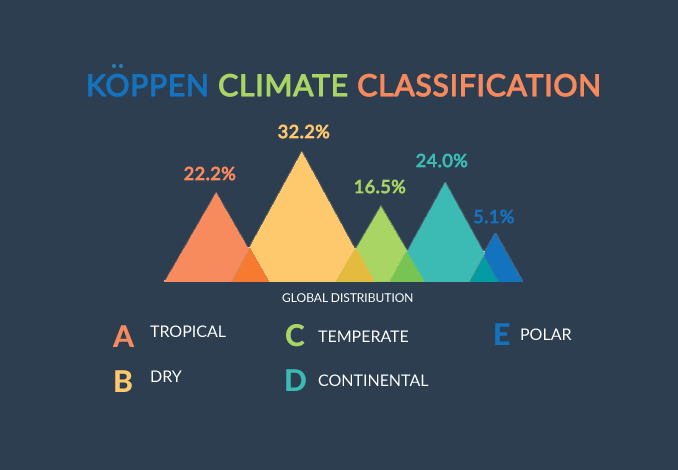
Important points about the Koppen Climate Classification:
- What is? The Köppen climate classification is a projection made by the German Wladimir Köppen on the behavior of the climate in the world.
- What are the 6 types of climates according to Köppen? Rainy tropical climate, dry climates, rainy temperate climates, cold winter climates, polar climates and high mountain climates.
- What climate classification did Austin Miller and Wladimir Köppen propose? The Austin Miller and Köppen climate classifications are very similar in structure, although the former took atmospheric circulation into account.
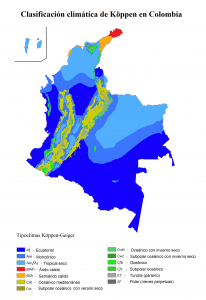 Climate variations are a subject to which human beings have always paid much attention.
Climate variations are a subject to which human beings have always paid much attention.
Given this, the climatologist Wladimir Köppen proposed studies that resulted in a climatic classification.
This broadly encompasses all the climates that exist on the planet and is based on 6 types that have been maintained since the beginning of the 20th century (specifically in 1918).
Studying this base of climate classification is essential to understand the behavior of the climate in each area of the world. Are you interested in this topic?
What is the Köppen climate classification?
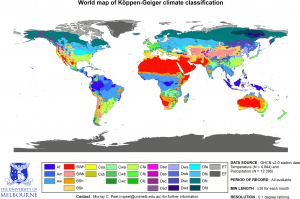 The Köppen climate classification is a projection made by the German Wladimir Köppen on the behavior of the climate in the world.
The Köppen climate classification is a projection made by the German Wladimir Köppen on the behavior of the climate in the world.
Thanks to the similarities and differences that he found in his studies, he established 6 major types of climates, which he classified with letters of the alphabet: A, B, C, D, E and H.
To understand the classification, certain characteristics must be taken into account:
- It is ordered geographically, starting from latitude 0º (confirm this) at the equator and expanding until it reaches the poles.
- The basis of the study was carried out taking as a reference the behavior of the flora of each geographical area, since in addition to being a climatologist he was also a botanist.
- To characterize the temperatures, he took as a base the annual and monthly average; as well as the behavior of rainfall.
- Each general climate type is accompanied by an extra letter that defines the subgroup to which it belongs, if applicable. These subgroups are in turn divided into two: the first measures the distribution of rainfall and is represented by the lowercase letters f, s, w and m. The second subgroup talks about temperatures and is identified by the lowercase letters a, b, c, d, h and k.
What are the 6 types of climates according to Köppen?
The types of climate according to Köppen are mentioned below, including relevant information about the subtypes.
1) Rainy tropical climate
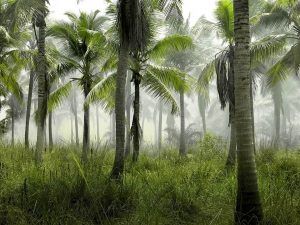 It is denoted by the letter A and encompasses those areas of the world where an average temperature exceeds 18º C.
It is denoted by the letter A and encompasses those areas of the world where an average temperature exceeds 18º C.
This climate is characteristic for having two different periods, one dry and the other rainy. Therefore, there are no 4 seasons.
Its location radius begins at the equator and extends towards the Tropics, covering those areas with heights that are below 1000 m. In the rainy tropical climate we have three main subgroups:
Equatorial (Af)
It is an area with high temperatures that exceed 20º C to 27º C, approximately. A lot of precipitation is generated, which raises the humidity level of the environment. The main focal point is on the rainforests.
Tropical (aw)
It is a warm area with rainfall that arrives in summer. It tends to be characteristic of savannahs.
Monsoon (Am)
It is a climate with high amounts of rainfall that are very intense, which makes it the wettest in the world. Winter is short and dry. It occurs in Southeast Asia.
2) Dry climates
 They are those in which the evaporation that occurs in the environment is much higher than the amount of precipitation received during the year.
They are those in which the evaporation that occurs in the environment is much higher than the amount of precipitation received during the year.
This climate is denoted by the letter B and we find the following subtypes:
Warm steppes (BSh)
High temperatures, few rains although with strong intensity when they occur. They are located near hot deserts.
Cold steppes (BSk)
Little but intense rainfall. Cold winters and temperatures similar to the continental climate the rest of the year. It is located in central Asia and to the north and south of America.
Hot deserts (BWh)
Very arid, with little rainfall and high temperatures. It is in all continents except Europe.
Cold deserts (BWk)
Climate with very cold winters and wide-ranging temperature changes throughout the year.
3) Rainy temperate climates
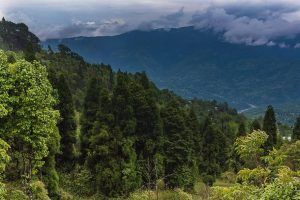 These climates correspond to the letter C. They are characterized by a wide and variable temperature range between the hot season and the cold season.
These climates correspond to the letter C. They are characterized by a wide and variable temperature range between the hot season and the cold season.
In the first case, it is possible to find temperatures ranging from -3º C to 18º C; while in hot weather it is higher than 10º C.
Here we find:
Oceanic Climate (Cf)
No dry period, so it is high humidity. Evident temperature changes according to the passing of the seasons.
Chinese weather (Cw)
Characteristic for having strong cold snaps in winter (although they are mild in general), but with warm and rainy summers.
Mediterranean climate (Cs):
Of few rains in the summer and some during the winter.
4) Cold winter climates
 They are those spaces that enjoy a winter with temperatures that are below -3º C and summers that are above 10º C.
They are those spaces that enjoy a winter with temperatures that are below -3º C and summers that are above 10º C.
To represent them, Köppen used the letter D and its subtypes are:
Humid Continental (Df)
Climate with great variability of conditions around the seasons, presenting dry and cold winters and humid and hot summers.
Continental Mild (Dw)
It is characterized by dry winters and slightly humid summers.
5) Polar climates
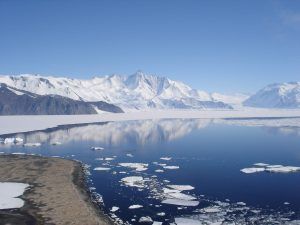 They are cold climates that do not have hot seasons, so temperatures remain below 10º C all year round.
They are cold climates that do not have hot seasons, so temperatures remain below 10º C all year round.
In polar climates we find:
Tundra (ET)
Very cold environment with temperatures below 10º C. Few precipitations and all in the form of snow. There is presence of vegetation.
Polar (EF)
Identical in conditions to the tundra, but there is no vegetation.
6) High mountain climates
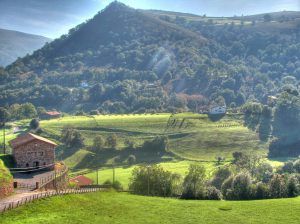 They are those climates that are generated in spaces above 3,000 m, regardless of the climate in their surroundings. It’s humid.
They are those climates that are generated in spaces above 3,000 m, regardless of the climate in their surroundings. It’s humid.
The mountainous representations are usually grouped into various formations, such as the Cordillera de los Andes. It is represented by the letter H.
What climate classification did Austin Miller and Wladimir Köppen propose?
The Austin Miller and Köppen climate classifications are very similar in structure, although the former took atmospheric circulation into account.
Since we have seen Köppen’s above, we will detail the proposal by Austin Miller which includes:
- Hot climates (A): includes the equatorial climate (A1), the tropical maritime climate (A2) and the tropical continental climate (A3).
- Warm-temperate climates (B): here are the Mediterranean climate (B1) and the subtropical climate (B2).
- Temperate-cold climates (C): the maritime climate (C1) and the continental climate (C2) are within its family.
- Cold climates (D): includes the maritime climate (D1) and the continental climate (D2).
- Polar climates (E).
- Desert climates (F): with hot deserts (F1) and cold deserts (F2).
- Mountain climates (G).
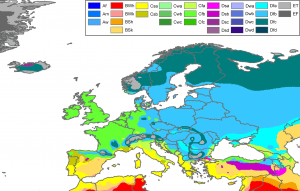 Knowing the different types of climate is useful to understand the variability that exists in each place and why some spaces are too cold and others too hot.
Knowing the different types of climate is useful to understand the variability that exists in each place and why some spaces are too cold and others too hot.
Take this information into account the next time you go on a trip so that you are not caught by surprise by the weather you will find at your destination.
Bibliographic references
- Modifications to the Köppen climate classification system, E García – 2004 – librosoa.unam.mx
- Spatio-temporal variability of the Köppen climates in Peninsular Spain and the Balearic Islands during the period 1981-2010, A Chazarra-Bernabé – Acta de la Jornadas Científicas de la …, 2018 – pub.ame-web.org
- Climate characterization for the Bahía de Banderas region using the Köppen system, modified by García, and information system techniques…, A Velázquez Ruiz, LM Martínez… – Research…, 2012 – scielo.org.mx
- The ecoregions of Northwest Argentina: based on the Köppen climate classification, EA Mendoza, JA González – 2011 – sidalc.net
Maybe you are also interested in:
- Alpine Climate: [Characteristics, Flora, Fauna and Adaptability]
- Arid Climate: [Characteristics, Flora, Fauna and Adaptability]
- Temperate Continental Climate: [Characteristics, Flora, Fauna and Adaptability]
- Continental Climate: [Characteristics, Flora, Fauna and Adaptability]
- High Mountain Climate: [Characteristics, Flora, Fauna and Adaptability]
- Climate of Argentina: [Characteristics, Flora, Fauna and Adaptability]
- Australia Climate: [Characteristics, Flora, Fauna and Adaptability]
- California Climate: [Characteristics, Flora, Fauna and Adaptability]
- Climate of Europe: [Characteristics, Flora, Fauna and Adaptability]
- Tundra Climate: [Characteristics, Flora, Fauna and Adaptability]
- Equatorial Climate: [Characteristics, Flora, Fauna and Adaptability]
- Cold Climate: [Characteristics, Flora, Fauna and Adaptability]
- Cold Weather: [Characteristics, Flora, Fauna and Adaptability]
- Mediterranean Climate: [Characteristics, Flora, Fauna and Adaptability]
- Ocean Climate: [Characteristics, Flora, Fauna and Adaptability]
- Polar Climate: [Characteristics, Flora, Fauna and Adaptability]
- Subpolar Climate: [Characteristics, Flora, Fauna and Adaptability]
- Subtropical Climate: [Characteristics, Flora, Fauna and Adaptability]
- Subhumid Temperate Climate: [Characteristics, Flora, Fauna and Adaptability]
- Temperate Climate: [Characteristics, Flora, Fauna and Adaptability]
- Humid Tropical Climate: [Characteristics, Flora, Fauna and Adaptability]
- Dry Tropical Climate: [Characteristics, Flora, Fauna and Adaptability]

![Photo of Pruning the Lady of the Night: [Importance, Season, Tools, Considerations and Steps]](https://www.complete-gardening.com/wp-content/uploads/2022/08/pruning-the-lady-of-the-night-importance-season-tools-considerations-and-steps-390x220.jpg)


